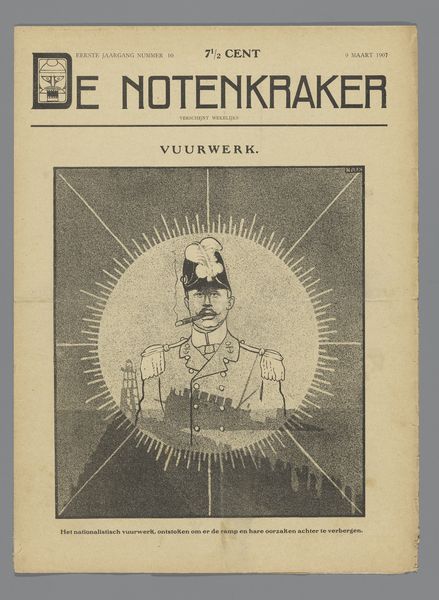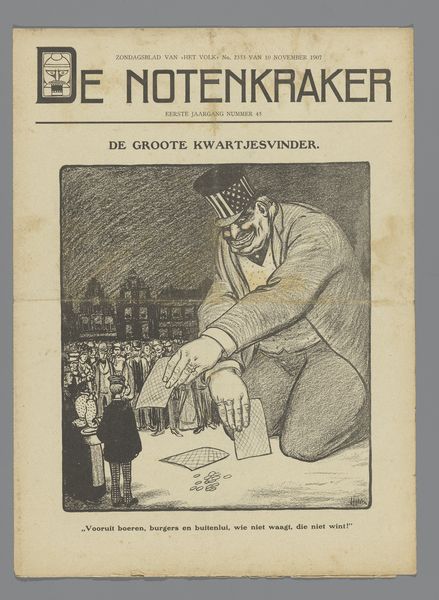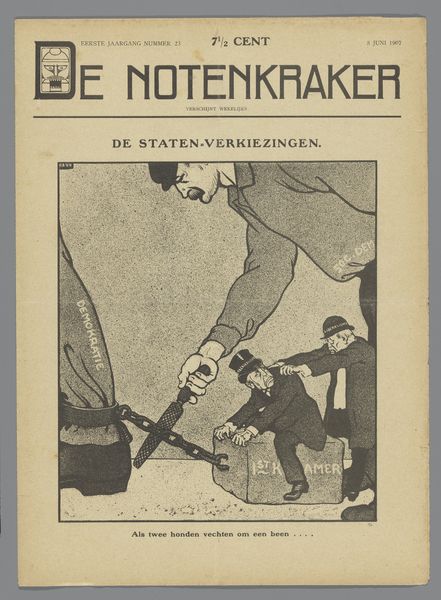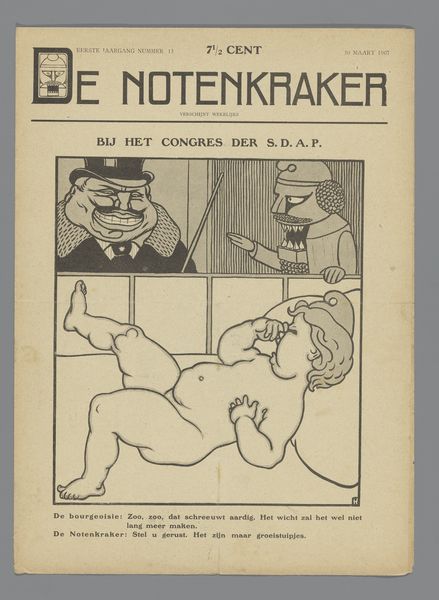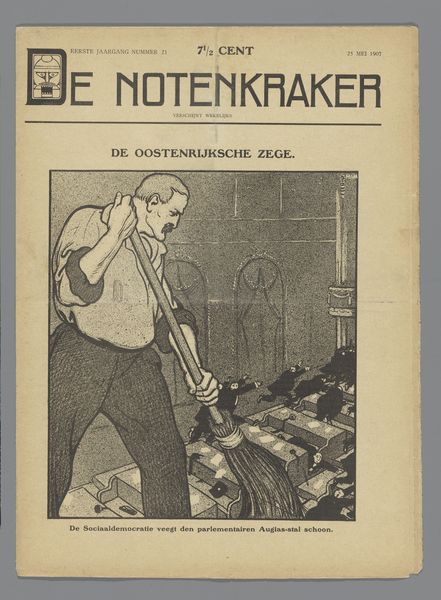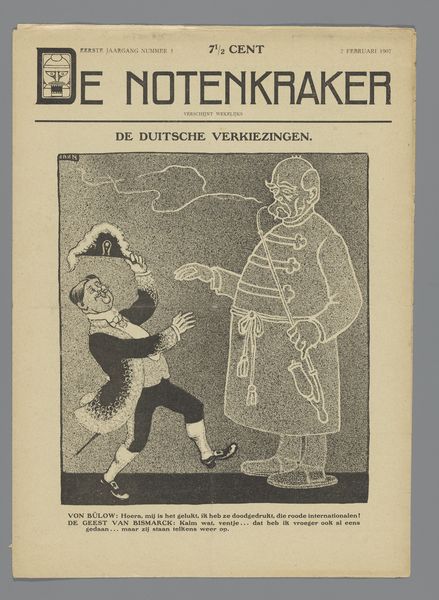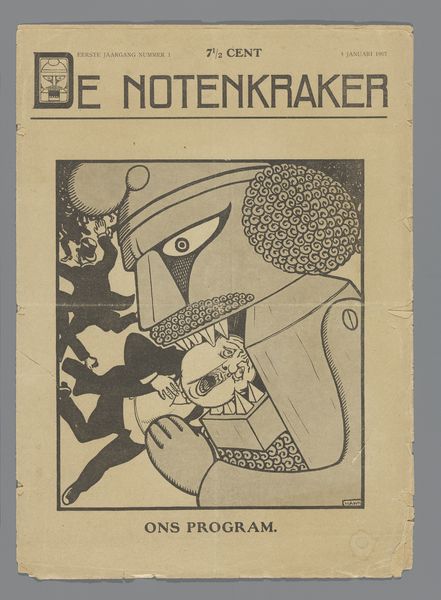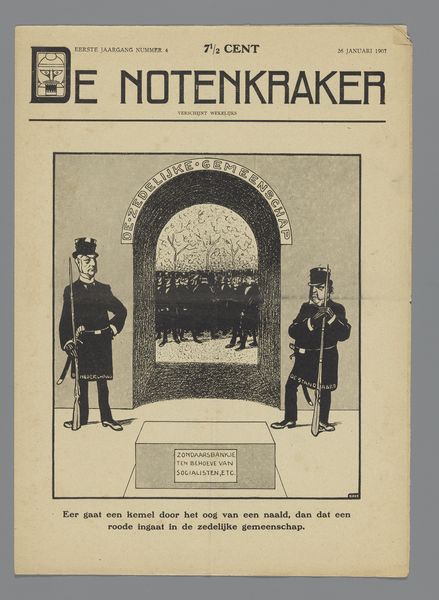
graphic-art, print, poster
#
portrait
#
graphic-art
#
art-nouveau
# print
#
caricature
#
symbolism
#
poster
Dimensions: height 348 mm, width 252 mm
Copyright: Rijks Museum: Open Domain
Editor: This is a poster called "Na het congres der S.D.A.P." by Albert Hahn, likely from 1907. It's a rather striking image, quite intense. I’m curious about the symbolism here, especially with the axes embedded in his hat. What do you see in this piece? Curator: I see a fascinating intersection of political commentary and visual metaphor. The axes, labelled "Praktijk" and "Theorie" – practice and theory – are powerful symbols. Notice how they’re embedded in the man's hat, visually suggesting that the tensions between theory and practice are weighing heavily on him, perhaps even splitting his very head open. Consider the weight those concepts held within the political climate of the time; what is remembered of this struggle? Editor: So, the tension is the key element? The poster gives such an immediate feeling of anger and frustration, maybe that is what they felt? Curator: Absolutely, and how does Hahn convey that emotion? Observe the deeply furrowed brow, the tightly clenched jaw, almost as if he is biting his tongue so as not to utter a displeasing sentence, to "bite the bullet". This intense caricature is meant to evoke a visceral reaction in the viewer. He’s embodying the struggles of the S.D.A.P., the Social Democratic Workers' Party, after their congress. Editor: The axes seem a rather violent image… Is there a suggestion the theory and the practice will cause a violent outburst or an inner turmoil? Curator: Exactly. It signifies that this inner struggle is causing external damage in some fashion. In this picture Hahn makes them work almost as external representations of his mind’s state, tools impacting on the skull. He shows these tensions that were already written and acknowledged, turning a political question into a personal feeling, where many can relate. Editor: I hadn’t considered that the figure was struggling to keep control! Curator: Indeed. Hahn uses symbols not just to represent ideas, but also to tap into the deep well of emotions associated with those ideas and what those tensions trigger in the viewer. Editor: That’s helped me see this as more than just a caricature; it's a symbolic representation of internal and external conflict. Thank you!
Comments
No comments
Be the first to comment and join the conversation on the ultimate creative platform.

